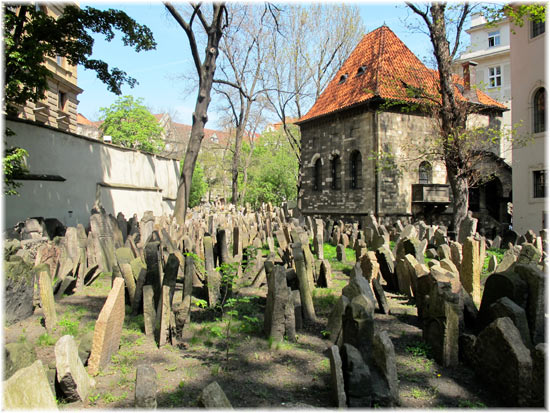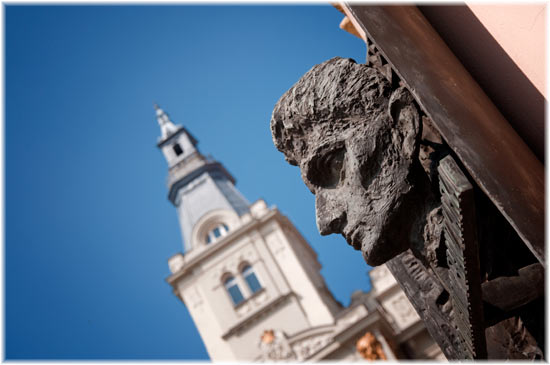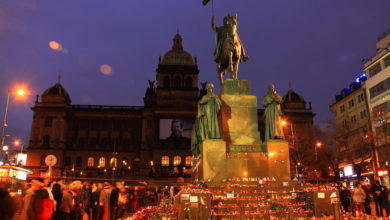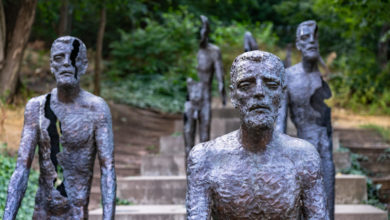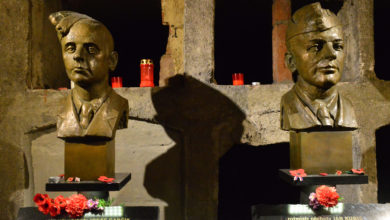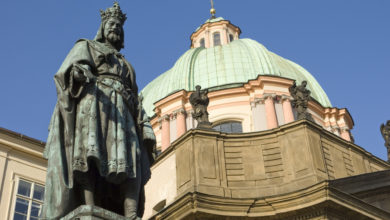The Jewish Heritage of Prague
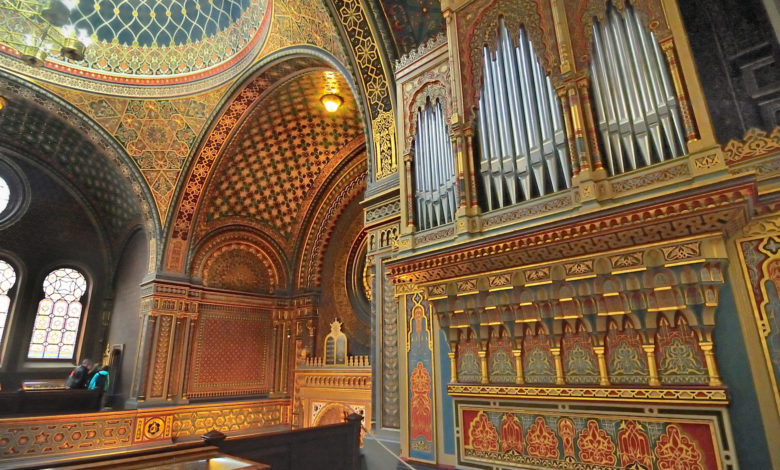
Two thousand years ago, the Romans expelled the Jews from Israel (the Holy Land). However: “The Torah was their sanctuary which no army could destroy.” Throughout the following centuries, Jewish culture survived in enclaves across the globe. Jews initially arrived in Prague during the tenth century. The main intersection of the Jewish Quarter (Široká and Maiselova streets) served as the meeting point for 2 medieval trade routes.
Throughout the twelfth century Crusades, the pope stated that Christians and Jews should be segregated. Jews were forced to wear a yellow badge, and their quarter got walled in and turned into a ghetto. During the sixteenth and seventeenth centuries, Prague had 1 of Europe’s largest ghettos, with 11000 inhabitants. Within its’ 6 gates, the Jewish Quarter of Prague was a plethora of two-hundred wooden buildings. Many commented that Jewish people “nested” rather than “dwelled”.
These Christianity “outcasts” depended primarily on profits made from lending money (which Christians were forbidden from doing) and community support for survival. Although their cash paid for protection (the kings heavily taxed the Jewish communities), frequently it was also a disadvantage. Across Europe, whenever times were hard and Christian debt to the Jews accumulated, whole Jewish communities were killed or evicted.
During the 1780s, Emperor Josef the Second eradicated much of this Jewish discrimination. Mainly, this was motivated by economic worries, as opposed to religious freedom. In 1848, the walls of the Jewish Quarter were knocked down, and this neighbourhood—called Josefov to honour the emperor who offered this small degree of toleration—was included as an Old Town district.
During 1897, rustic Josefov was erased and substituted for a more modern town—the initial 220 buildings and 31 streets turned into 83 buildings and 10 streets. Today, this is what you will see: an appealing neighbourhood of attractive, mainly Art Nouveau buildings that have a few historical Jewish structures surviving. By the 1930s, the Jewish community in Prague was extremely successful, thanks primarily to the ability they had to nurture talent—a rarely seen characteristic in small countries in Central Europe, whose citizens, in the words of Robert Musil (the renowned Austrian novelist), were united in their “unwillingness to let one another get ahead”.
Out of the 120000 Jews residing in this area during 1939, only 10000 lived through the Holocaust to witness liberation in 1945. These days, there are just 3000 “recorded” Jews living in the Czech Rep and, of these, just 1700 live in Prague (in all likelihood, there are more Jews here but, given their history with the Communists and the Nazis, you can see why lots of them decide not to register). Despite their small numbers, the legacy of the Jewish community lives on in modern-day Prague.

